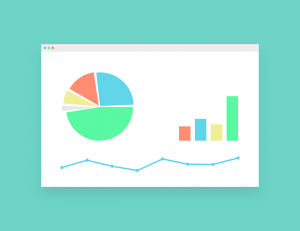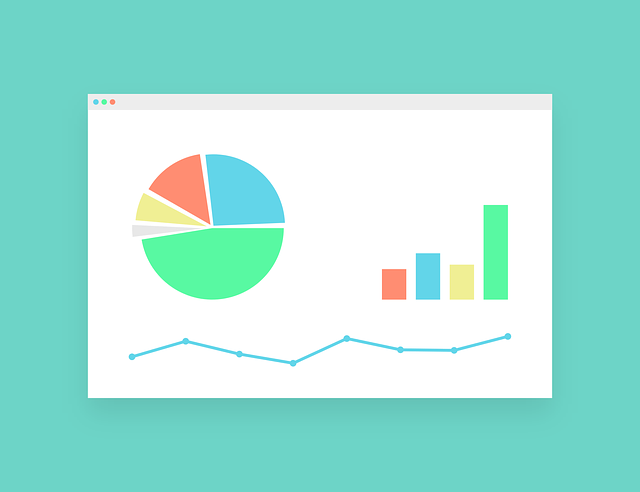Understanding financial solvency is as important to an investor as it is to a financial manager. Whether it’s having the money to pay off a friendly wager or having the capital to pay off a commercial loan, being solvent is necessary to achieve long-term success. Solvency is the possession of assets in excess of liabilities, or more simply put, the ability for one to pay their debts. This is an important metric for a business. If a business does not have the capital to pay off their debts, it means they are at risk of defaulting, which can severely cripple, or even end their business operations. This concern is what leads businesses to keep tight budgets.
Budgeting
Budgeting is an important part of financial management. Being able to keep a tight budget allows you to stay ahead of schedule. Everyone in the company knows approximately how much money is coming in and when it’s arriving. If the company foresees a shortfall of cash, they can reallocate resources to remedy the problem. This helps businesses remain solvent. By projecting cash flows, a company is able to acquire debt much more confidently. If there was no budget in place, you could wind up in a scenario where money needs to be re-invested into a crucial part of the business but because the company took out debt, they must first meet their debt obligation. Since a company’s solvency is extremely important to those on the inside and outside, there are a few financial ratios that can give you a better idea about how solvent a company is.
How to Measure Solvency

The four most important ratios that measure a company’s solvency are the Current Ratio, the Quick Ratio, the Interest Coverage Ratio and the Debt-to-Equity Ratio. Each of these ratios measures a different aspect of solvency. The Current and Quick Ratios measure liquidity, which while related to solvency is not the same thing. Liquidity is the availability of assets to a company that are either cash or easily convertible to cash – say, marketable securities. If a company has one million dollars in assets, and half of it is cash, you can say they have a high level of liquidity. If that same company also had two million dollars of debt, they would still have a high level of liquidity but they’re not very solvent, because their liabilities are two times greater than their assets.
Current Ratio
The first liquidity ratio, the Current Ratio, is calculated by dividing Current Assets by Current Liabilities. This ratio measures a company’s short term liquidity. It shows how solvent a company is in the short term – where short term is defined by less than one year. If a company’s Current Ratio is greater than one, it means that they can cover all their current liabilities with their current assets if needed.
Quick Ratio
The second liquidity ratio, the Quick Ratio, is nearly identical to the Current Ratio but it subtracts inventory from current assets. The Quick ratio is calculated by divided Current Assets minus Inventory by Current Liabilities. The reason that the Quick Ratio is considered a separate calculation is that inventory, while still an asset, is not very liquid. So, when you’re discussing a company’s short term liquidity to determine if they’re solvent you need to only include assets that could be easily converted to cash.
Interest Coverage Ratio
The Interest Coverage Ratio is a much more nuanced ratio and it measures a company’s ability to meet its scheduled interest payments. The Interest Coverage Ratio is calculated by dividing a company’s operating income by their scheduled interest expense. This ratio answers the question of whether a company will meet its interest obligation through normal operating income.
Debt-to-Equity Ratio
The Debt-to-Equity ratio is very simple. It divides a company’s debt by their equity. If the number is greater than 1 it means that the company has more debt than equity. This ratio shows how leveraged a company is. Financial leverage refers to a company’s use of debt to acquire additional assets. If a company takes out a loan (debt) to buy a new piece of machinery, they are more leveraged than if they used their revenue from operations (equity) to fund the purchase instead. If a company uses a lot of debt to make their purchases, they could be at risk of bankruptcy if operations are interrupted. Financial leverage is what led to a lot of companies declaring bankruptcy in the 2008 financial crash including, most famously, the multinational investment bank: Lehman Brothers.
Understanding Financial Statements
Now while you can likely just Google these ratios if you require them, it’s still important to know where they come from. You can find all the necessary components for these four ratios on a company’s financial statements. A company’s financial statements consist of three basic reports: the balance sheet, the income statement, and the cash flows statement.
Balance Sheet
 The balance sheet shows a company’s assets, liabilities, and equity. Aptly named, a balance sheet must balance where the value of the assets is equal to the value of the liabilities plus equity. Just by glancing at a company’s balance sheet you could gain a firm understanding of how solvent they are. You would be able to see how much cash is available and how close to maturity their debts are. This would allow you to see if a company can meet its short-term obligations. However, being solvent requires a company to meet both their short and long-term debts, which you wouldn’t be able to accurately forecast using the balance sheet alone. Therefore, just looking at the balance sheet wouldn’t tell you enough.
The balance sheet shows a company’s assets, liabilities, and equity. Aptly named, a balance sheet must balance where the value of the assets is equal to the value of the liabilities plus equity. Just by glancing at a company’s balance sheet you could gain a firm understanding of how solvent they are. You would be able to see how much cash is available and how close to maturity their debts are. This would allow you to see if a company can meet its short-term obligations. However, being solvent requires a company to meet both their short and long-term debts, which you wouldn’t be able to accurately forecast using the balance sheet alone. Therefore, just looking at the balance sheet wouldn’t tell you enough.
Income Statement
The income statement would help you address whether a company can meet their long-term debts. The income statement shows a company’s revenues, expenses, and profits or losses. By subtracting the expenses from the revenues you’re left with a positive number – the profits, or a negative number – the losses. If a company is constantly incurring losses, their ability to meet their long-term debts would come into question. In the same respect, if a company was constantly profiting from their normal business operations, it would be expected that they will have an easier time meeting their long-term obligations.
Breaking Down the Income Statement
 When considering a company’s long-term solvency using their income statements it’s important to take note of a few key numbers. If you’re trying to gauge whether a company will meet their long-term debt obligations, you’ll need to look at their income from business operations. This includes the company’s Total Revenue, Marginal Revenue, Output, and Profit.
When considering a company’s long-term solvency using their income statements it’s important to take note of a few key numbers. If you’re trying to gauge whether a company will meet their long-term debt obligations, you’ll need to look at their income from business operations. This includes the company’s Total Revenue, Marginal Revenue, Output, and Profit.
Total Revenue refers to all money brought in by business operations. This is different than profit. To calculate profit you must subtract the expenses from total revenue to calculate how much money is made or lost by a company’s business operations. Marginal Revenue is the amount of revenue gained by one additional unit of a good or service. This shows how much extra revenue is brought into the company by each individual sale. Output is simply the quantity of goods or services produced. This shows you the number of goods or services created by the company.
These numbers can show whether a business will be profitable in the future. If they can make money from their business operations alone, they will be much more able to meet their long-term debts. When analyzing these numbers you will be able to determine if a company is running efficiently and if their long-term operations will be profitable. Don’t get trapped by putting too much weight into total revenue alone, it is only a piece that can be explained by the other numbers. A company can generate a large amount of total revenue, but if their expenses are too high they won’t be profitable. Likewise, if a company’s output is high, but their marginal revenue is low, it can appear that they’re more successful than they truly are.
If you only look at profit, you may overlook something that could hurt a company’s long-term solvency. When looking at profit, you’ll want to make sure that it’s sustainable. If a company is barely profiting, or even losing money, it is unlikely that they will be able to meet their long-term debts. In the same respect, if a company is only profiting due to circumstances, such as a temporary increase in demand, their ability to profit in the future may come into question. It’s important to look at each of these numbers and see how they interact with each other to get an accurate reading as to whether a company will be solvent long-term.
Cash Flow Statement
The last financial statement, the cash flows statement, is essentially the company’s official budget. The cash flow statement shows where cash comes from and goes to within the business. Seeing where cash is flowing throughout the business allows you to observe how a company manages their cash flows. If a company is re-investing a lot of their cash into the business, you could expect them to increase revenues or decrease expenses in the future. At the same time, if money is constantly flowing out of the business, due to excessive debt obligations or potential legal troubles, it could be considered problematic.
Issues involving Financial Statements
While a company’s financial statements can say a lot about their solvency that doesn’t mean there aren’t potential issues. One of the most glaring issues with over-analyzing a company’s financial statements is the underlying accounting methods used on a company’s balance sheet. Without getting too complex, a company can manipulate the depreciation – known as the decrease in value of an asset due to time – of certain assets on their balance sheet statements. Due to certain Generally Accepted Accounting Principles (GAAP), companies can use various methods to change the value of their assets that appear on the balance sheet. The reason for this is mostly tax based. If a company chooses to accelerate the depreciation of an asset, it defers the tax liability of that asset. This means that the taxes on the asset would be reduced in the early stages, but increased in the later ones. You should be aware of this method when reading into a company’s balance sheet to determine their solvency; they could have an asset whose true value is much different than listed.
Fraud and the Enron Corporation
 The other major thing to worry about when looking at a company’s financial statements is whether they are being truthful. Now this does seem kind of nefarious, but these things do happen. In 2001, it was discovered that the energy company, Enron was using various illegal and unethical financial accounting methods to move around their debts and cash flows to make the company seem profitable. Essentially, they were transferring their debts to subsidiaries and claiming that they were provided cash; they were selling their debts to themselves with cash that they provided. No money or debt ever moved in or out of Enron, it just appeared that way in their financial reports.
The other major thing to worry about when looking at a company’s financial statements is whether they are being truthful. Now this does seem kind of nefarious, but these things do happen. In 2001, it was discovered that the energy company, Enron was using various illegal and unethical financial accounting methods to move around their debts and cash flows to make the company seem profitable. Essentially, they were transferring their debts to subsidiaries and claiming that they were provided cash; they were selling their debts to themselves with cash that they provided. No money or debt ever moved in or out of Enron, it just appeared that way in their financial reports.
When this was discovered, Enron went bankrupt not only costing thousands of people their jobs but financial crippling many people who held large stakes of Enron in their portfolios. That said, unless given reasonable doubt you should assume that companies are complying with the rules and regulations when reporting their financial statements. The penalties for disobeying these rules are steep and there is a reason not many companies try to do it in the first place.
Solvency is Important
By carefully vetting a company’s financial statements and calculating the appropriate ratios you can gather enough information to be confident about whether a company will be able to meet its current and future debt obligations. This is important to those both on the inside and outside of a company. Whether you’re an investor looking to purchase shares from a company or a manager working within a company, you will want to know whether your company will be able to meet its debts going forward. This lesson is part of the PersonalFinanceLab curriculum library. Schools with a PersonalFinanceLab.com site license can get this lesson, plus our full library of 300 others, along with our budgeting game, stock game, and automatically-graded assessments for their classroom - complete with LMS integration and rostering support!

Get PersonalFinanceLab
[qsm quiz=151]
